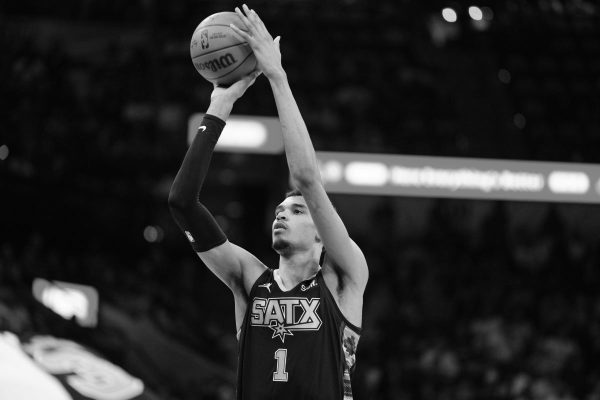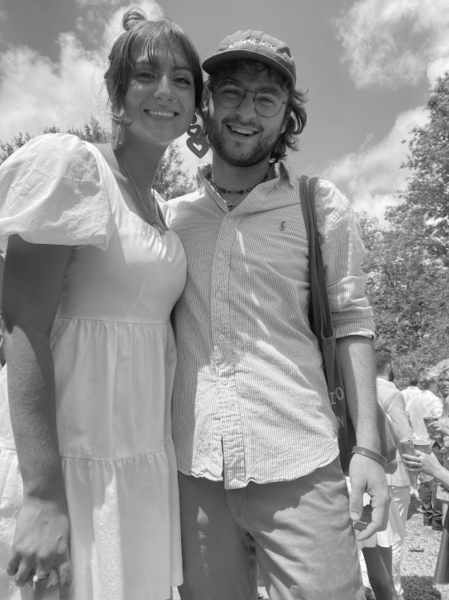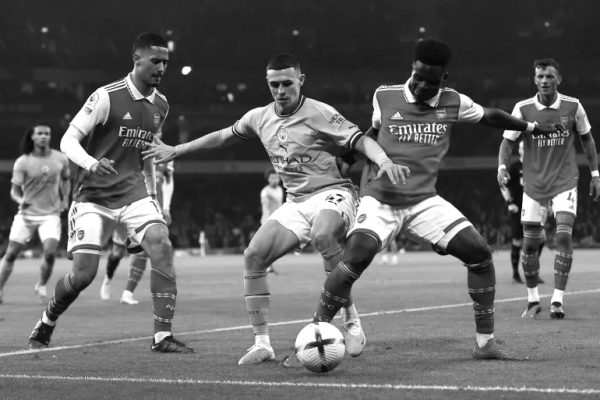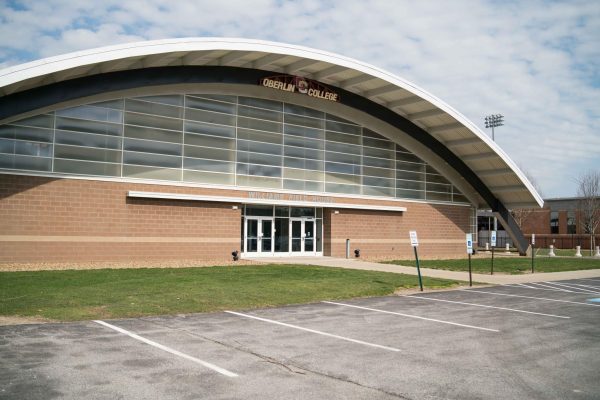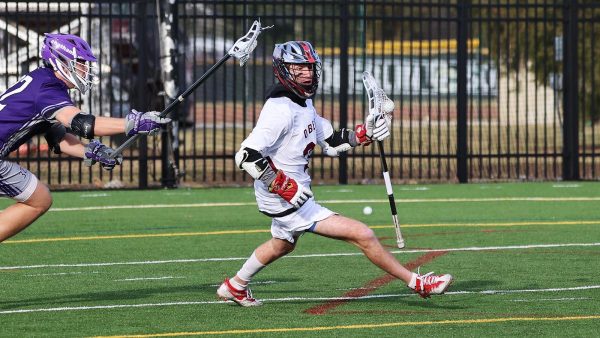From the Perspective of Non-binary Athletes
Finding Solace
Abby Bellows
I used to look at my reflection in windows when I ran by, focusing on my stride — how my legs moved past one another, how my feet landed — but I could never bring myself to look up at the rest of my body, knowing I couldn’t look at my chest without sending myself into a mental spiral. It was already hard enough competing on a women’s varsity athletics team, showering in a women’s locker room, and being included in groups referred to as “ladies” and “women” when I was not a woman and was not comfortable with how my body looked.
Existing in athletic spaces means choosing between a women’s space or a men’s space — there is no space for me. I am a non-binary trans masculine person who participates in women’s cross country and track and field because there is no gender category that fits me in the sports world, so I must compete according to my sex assigned at birth.
I also never could have predicted how my gender has changed over the course of my college career; the young woman who first came to the cross country team four years ago was happy to have found a group of cool people to run with. In the years since then, I have become more and more grateful for my team as my relationship with competitive running has gotten more and more complicated.
When I was talking to Coach Appenheimer as a high school recruit, one of the first questions he asked me was if I loved running. My answer was a definitive yes — this was one of the few things I felt confident about as a 17-year-old. Cross country and track shaped me in a number of ways, including how I understand my gender. Running helped me conceptualize how I see myself not only as an athlete, leader, and friend, but also as a trans person. Without the boundless support from my teammates and coaches, I would not have had the confidence to come out as trans, let alone freely express my gender. Coming out is an ongoing process of challenging conversations and respectful corrections between myself and my teammates, my teammates and my coaches, and myself and my coaches.
Our conversations over the years have touched a number of topics, from explaining what it means to me to be nonbinary, to helping my coach understand why I wanted to get top surgery — a gender-affirming procedure in which a person’s breast tissue is removed in order to reduce chest size or achieve an entirely flat-chested appearance — to the safety precautions we would have to take after my surgery. Thankfully, I have coaches who are willing to have these conversations with me, understanding that happy athletes compete better and that happy people make a better team.
To say that everything is perfect is a myth and a lie. There is always work to be done — ways to improve, and challenges to overcome — but that’s athletics. I cannot express the gratitude, love, and appreciation I feel for my team and my coaches for the work, time, and effort they have put into helping create an environment that legitimately includes me.
However, please do not mistake my gratitude for contentment. The work put in by me, my team, and my coaches is immense and has taken several years; we are in the midst of a process. At this point, we are still working to consistently create an environment where gendered language is not used, where people’s names and pronouns are respected, and where everyone’s questions and concerns are listened to. Our work toward inclusion is like all the other work we do as a team: We work hard, work together, and never let ourselves be satisfied.
A Battle With No Direction
Leah Ross
I don’t remember exactly when I realized I might be trans. It was a sort of slow collection of micro-epiphanies coalescing into a broader identity. My realization was informed by self-exploration while I was held up by the social rejection of gender variance. I’m not entirely convinced that I was born into the “wrong” body, rather that I was born into the wrong society.
As a result, my body and my understanding of it has morphed throughout the years. It bends and shifts as my landscapes and environment have altered. My perception of femaleness is constantly rearranging itself. I’m not completely opposed to my body, but like an ill-fitting dress, the problem isn’t necessarily the design, it’s the way people view you in it. I want the dress tailored, certain fabric taken away, maybe some other small details added. And while Oberlin has provided a near-perfect atmosphere to explore my identity, the nuances of my identity start to break down when I enter the realm of collegiate basketball.
I’m a member of the women’s basketball team. It’s a team that I absolutely adore. Last year was my first at Oberlin; we went on to win the conference championship for the first time in program history. The program’s intensity hasn’t wavered in my second year, as we look to repeat.
What has changed in that time are my pronouns and my understanding of my sex and gender. As I prepared for another grueling season, both physically and mentally, I was acutely aware that I had to prepare myself for persistent misgendering. For two hours a day, six days a week, for five months, I anticipated a wide range of people would participate in misgendering me.
Roughly two months into the season, I have yet to be disproven. To members of the coaching staff, athletic trainers, equipment room employees, referees, and opposing teams, my pronouns are she/her/hers and I am a woman. To be exceptionally clear, most of these people have been open and willing to get better at using they/them pronouns; it’s simply a process that takes a long time. But the toll is significant, and maintaining a sense of self is hard work. If a film session or practice is particularly riddled with she/her, I will say they/them over and over again in my head until it feels sufficient.
Some days, I don’t have enough mental energy to combat the misgendering and I succumb to being a woman. I have yet to find an effective strategy, one that refuses to concede the existence of my gender while simultaneously acknowledging the importance of team over individual. Honestly, I’m scared that with the passage of time, the latter will overwhelm the former. For now, I resign myself to being a member of the “women’s” basketball team, trusting that my teammates and I will make enough space for my trans identity.
On a larger scale, my identity is complicated not just by Oberlin-specific interactions but by the sport itself. Basketball is male-dominated, and relies heavily on biology to create deep fissures between men and women. Sexism within the sport has conflated inability to perform certain movements with a fundamental lack of skill. Subsequently, the female body is assumed to be inferior, a replica of the male body that fell short.
In my case, it constructs my body as inescapably female, which directly challenges my self-perception in which I fight to see my anatomy as a combination of female and male. This contradiction creates a dynamic that is inconsistent with my understanding of identity. I’ve experienced repeated instances of blatant sexism and misogyny in basketball, which has led me to develop a sense of pride and resiliency as a woman in sports over the years. Because womanhood, in this case, has been forcibly assigned to me, it intermingles awkwardly with my transness. To be read as a woman in sports — and to identify as such to a certain extent — and read as trans outside of it is to be endlessly confused. And so as I traverse the worlds between athletics and greater Oberlin, my body is perpetually in flux. It wavers in and out of femaleness, seen and unseen, trans and cis.
I feel pressure to provide a tangible solution, but frankly, I’m at a bit of a loss. The reality of the situation is that the public existence of non-binary/trans athletes in sports is so new that the system has no idea how to handle it. We unapologetically disrupt the sexist architecture that demands a separation of bodies. The institution of sports has no incentive to deconstruct this power dynamic, leaving non-binary/trans athletes to wander aimlessly in the middle.
With this in mind, I’m inclined to let time work its magic. As general attitudes toward non-binary/trans people improve, hopefully athletics will follow suit. And yet, I’m not entirely convinced the inclusion of non-binary/trans athletes in collegiate sports is a waiting game. But for me, as of right now, it’s a battle with no direction.


